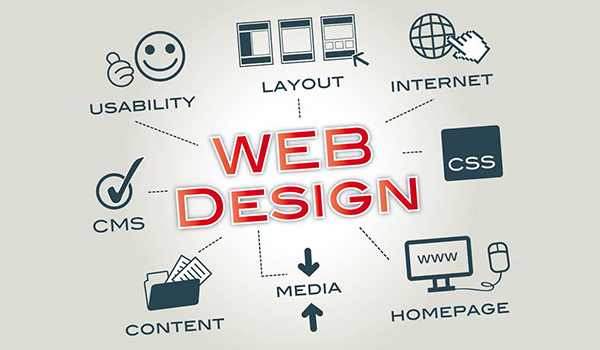Affordable Aligned Position Web Design: Top-Notch Web Design Services at Competitive Prices
Affordable Aligned Position Web Design: Top-Notch Web Design Services at Competitive Prices
Blog Article
The Very Best Kinds Of Web Style to Enhance Customer Experience and Interaction
In the ever-evolving landscape of digital communication, the efficiency of Web style significantly influences user experience and involvement. Various layout strategies, such as minimalist, receptive, and interactive layouts, each offer unique benefits that can accommodate diverse customer needs. Understanding which kinds of website design ideal serve these purposes can be pivotal for organizations aiming to boost customer satisfaction and retention. Nonetheless, the question stays: which layout elements truly resonate with users and foster purposeful engagement? The exploration of these concepts discloses crucial understandings that might redefine your method to website design.
Minimal Website Design
As electronic landscapes end up being progressively messy, minimalist Web design has actually arised as a powerful method to improving individual experience. This layout ideology focuses on simpleness, concentrating on crucial components while removing unneeded disturbances. By making use of enough white area, straightforward navigation, and a limited shade scheme, minimal style cultivates quality and routes customer interest to essential content.
The core principle of minimalist website design is to create a seamless communication for individuals. By minimizing cognitive tons, customers can quickly understand information without really feeling bewildered. This straight strategy not just improves use yet likewise urges engagement, as site visitors are most likely to explore a website that is visually attractive and easy to navigate.
In addition, minimal style commonly emphasizes typography and images, using these components strategically to communicate messages efficiently. This concentrate on crucial elements can improve brand name identity and develop an unforgettable user experience. Essentially, minimalist Web style is not simply a pattern; it is a thoughtful technique that acknowledges the relevance of user-centered style. By removing peripheral elements, developers can create an extra appealing, reliable, and pleasurable Web experience for all customers.
Responsive Web Style
In today's varied electronic environment, responsive website design has become necessary for developing a seamless user experience throughout a plethora of tools. As users access sites on mobile phones, tablets, laptops, and desktops, the capacity of a website to adapt its layout and content to various display dimensions and resolutions is important.
Responsive website design employs flexible grids, photos, and CSS media queries to ensure that Web material exists ideally, despite the device used. This approach not only enhances the aesthetic appeal of a site but also significantly boosts functionality. Users are more probable to involve with a website that provides a consistent experience, as it removes the aggravation of needing to focus or scroll excessively.
By adopting receptive design, businesses can boost their exposure and get to a wider target market. In summary, responsive Web style is a basic method that boosts user experience, interaction, and total fulfillment.
Interactive Website Design
Receptive Web design lays the groundwork for improving customer experience, but interactive website design takes this a step even more by involving users in a much more vibrant way - Aligned Position Web Design. By integrating aspects such as computer animations, clickable prototypes, and real-time responses, interactive Web design mesmerizes individuals, attracting them into a richer browsing experience
This technique not just fosters engagement however additionally encourages individuals to check out material proactively instead of passively consuming it. Techniques such as gamification, where customers earn benefits for finishing jobs, can significantly enhance the moment invested in a website and boost overall satisfaction. Additionally, interactive functions can streamline complicated details, making it extra delightful and absorbable.

Including interactive design aspects can additionally result in greater conversion prices, as individuals are more most likely to engage with a site that proactively involves them. Aligned Position Web Design. Eventually, interactive Web layout changes Website user experiences right into unforgettable trips, making certain that visitors return time after time
Flat Layout
Characterized by its minimalistic method, flat style stresses simpleness and performance, removing unnecessary aspects and concentrating on important functions. This design approach focuses on functionality, making certain that customers can browse user interfaces with simplicity and performance. By using a tidy visual, level layout removes the mess commonly located in extra luxuriant designs, therefore boosting customer emphasis on material and capability.
The characteristic of level design depends on its use vibrant colors, easy typography, and geometric forms. These elements add to an aesthetically enticing user interface that is both friendly and modern-day. In addition, flat design fosters a feeling of quality, allowing users to discern important actions and details without diversion.
Additionally, flat design is especially reliable in responsive Web layout, as its simplicity converts well across different tools and screen sizes. By focusing on essential functions, level design not just fulfills user demands but likewise urges smooth communication, making it a vital element of effective Web style strategies.
Adaptive Web Style
Flexible website design customizes the individual experience YOURURL.com by developing numerous fixed layouts tailored to various screen sizes and devices. Unlike responsive style, which fluidly readjusts a solitary format, flexible design uses distinctive formats for specific breakpoints, making sure ideal presentation on various platforms. This technique enables developers to focus on the one-of-a-kind characteristics of each tool, enhancing functionality by delivering specifically what customers require based upon their context.
Among the key benefits of flexible Web style is its capability to enhance lots times and efficiency. By offering customized web content and photos that fit the individual's gadget, web sites can minimize information use and enhance loading speeds. This is especially helpful for individuals with slower links or restricted data plans.

In addition, flexible layout assists in a more regulated and regular branding experience. Given that developers create several layouts, they can make certain that the visual aspects align with the brand's identity throughout different platforms - Aligned Position Web Design. This results in a cohesive customer experience, boosting interaction and advertising customer retention
Conclusion
In final thought, the combination of minimalist, responsive, and interactive Web layout principles substantially boosts user experience and interaction. Minimal design fosters clearness and emphasis, while responsive style ensures versatility across different tools, advertising ease of access. Interactive layout captivates individuals with vibrant components, urging expedition and customization. Collectively, these style approaches add to the development of straightforward settings that not just boost fulfillment but also drive higher conversion rates, underscoring their vital value in contemporary website design strategies.

Minimal design promotes clearness and emphasis, while receptive design guarantees versatility throughout numerous tools, advertising access. Jointly, these design approaches contribute to the creation of easy to use atmospheres that not only enhance satisfaction however likewise drive higher conversion rates, highlighting their important relevance in modern Web design strategies.
Report this page